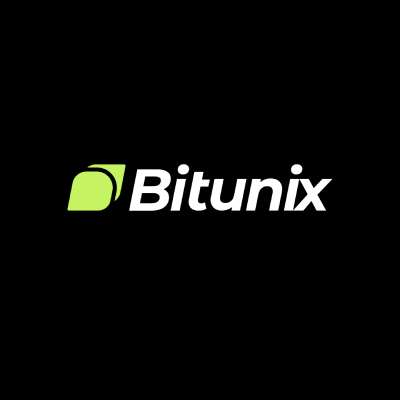Million-dollar ATOM proposal passed: Detailed explanation of Dora Factory, a new leader in public goods technology

The most recent major event in the Cosmos ecosystem is Cosmos Governance Proposal No. 917 : Dora Factory and DoraHacks teams applied for a grant of US$1 million from the Cosmos Hub Treasury to run ten rounds of Quadratic Funding community donations for the Cosmos Hub ecosystem within two years.
As the largest treasury grant application in the Cosmos Hub in recent times, this proposal has aroused extensive discussion in the Cosmos community and has received unanimous support from the community. More than 1 billion US dollars of ATOM voted in favor, including major verification nodes SG-1, Chorus One, P2P, Zero Knowledge Validator and Cosmos core contributors Informal System, Keplr, Cosmostation, etc. With a approval rate of 91.6%, Proposal 917 has also become the motion with the strongest community support in the history of Cosmos governance.
After the proposal was passed, Cosmos Hub had its first native quadratic community funding program. Dora Factory also became the most supportive public goods technology team in the history of the Cosmos community.
After the proposal was passed, Dora Factory also officially announced the second AEZ (ATOM Economic Zone) quadratic funding with DoraHacks, which is also the official start of the first long-term funding program. This quadratic funding program will last for two years, starting on May 15, 2024 and ending in May 2026. During this period, ten community votes and matching bonus pool allocations will be conducted. The total matching bonus pool is 200,000 US dollars and 80,000 $ATOM.
Why did the Cosmos community unanimously approve a million-dollar grant for the public goods infrastructure Dora Factory and the developer incentive platform DoraHacks?
What is public goods funding and what role do public goods play in the Web3 ecosystem?
This article will give you a detailed introduction to Dora Factory, a low-key new leader in public goods technology.
What is public goods funding?
Public goods funding is a concept often mentioned in the Web3 industry. General public goods refer to non-profit things or services for everyone to use. These are usually provided and managed by the government or other public institutions, such as parks, libraries, roads, etc.
Public goods in the traditional sense have the characteristics of non-exclusivity (one persons use does not prevent others from using them), non-rivalry (one persons use does not reduce others use) and positive externalities (benefit to one person will also benefit others).
In the field of encryption, public chain infrastructure, storage, developer tools, software middleware, and some user-oriented and non-profit applications, including block browsers, data dashboards, wallets, etc., can all be regarded as public goods.
Encryption and blockchain technology are ideal tools for public goods funding due to their inherent openness, transparency, and verifiability. At the same time, the use of smart contracts can significantly improve the efficiency of funding and reduce costs.
However, public goods in the crypto space also face many problems and challenges.
Although everyone knows that public goods are good and important, few people, whether ordinary users, foundations or project teams, continue to pay attention to public goods. As a rapidly developing industry, cryptocurrencies have endless new narratives emerging every moment, competing for limited attention, time and funds.
In more detail, this question can be divided into the following three points:
1. The multiple parties involved in public goods funding (foundations, institutions, DAOs, developers, communities) are not coordinated enough;
2. Lack of sustained and effective funding channels;
3. Public goods funding is boring.
In the course of Web3鈥檚 history, Dora Factory has emerged, attempting to build infrastructure to enable mass adoption of public goods funding.
Dora Factory: Infrastructure for Public Goods
Since its inception, Dora Factory has been committed to building public goods and solving related key problems. Recently, the Dora Factory team launched an ambitious proposal in the Cosmos Hub to apply for $1 million worth of ATOM tokens from the Cosmos community treasury, and plans to launch 10 Cosmos-native quadratic grants in the next two years. This proposal has caused quite a stir and has received support from Cosmos core contributors such as Keplr, Cosmostation, Chorus One, and CryptoCito. However, as a team that has been quietly BUIDLing for many years, Dora Factory does not seem to be well known to the public.
Founded in 2021 and incubated and supported by DoraHacks, the industrys largest developer and public goods funding platform, Dora Factory is the industrys leading decentralized governance infrastructure and multi-chain public goods funding protocol stack. Its products include the flagship Public Good Staking infrastructure and Dora Vota, a specific application chain dedicated to voting and governance, designed to empower the global geek movement, open source communities and decentralized organizations.
Multi-chain quadratic funding: linking communities and ecosystem builders
The Dora Factory team has been committed to promoting the adoption of multi-chain quadratic funding since 2020. It is the first and only team in the industry to independently develop and promote the adoption of multi-chain quadratic funding. So far, the Dora Factory team has become a leader in multi-chain quadratic funding and has successfully deployed native quadratic funding for the first time in multiple mainstream crypto ecosystems, including: BNB Chain, Solana, Polygon, Aptos, Cosmos Hub, Injective, Filecoin, Avalanche, etc.
The coin-holding community can support high-quality early projects and public goods in the ecosystem by donating native tokens, thereby promoting better collaboration between the foundation, community and developers to pursue a common vision. Dora Factory has provided more than $10 million in funding and donations to the crypto multi-chain ecosystem through the Multi-Chain Quadratic Funding Agreement.
After the passage of Proposal 917 of Cosmos Hub, relying on Dora Factory, Cosmos Hub has a native, long-term community quadratic funding plan for the first time. Public goods in the Cosmos ecosystem, including developer tools, community tools, data dashboards, Defi dashboards and other core development teams can obtain long-term, stable funding and the attention and support of the entire community.
Public Goods Pledge: Providing Perpetual Funding for Public Goods
The Dora Factory team first proposed the concept of Public Good Staking at the end of 2022. They obtain block native rewards by operating underlying infrastructure such as verification nodes, sorters, and validators, and continue to use these rewards to fund multi-chain developers and public goods ecosystems.
At present, Dora Factory has promoted the public goods pledge movement on the mainnet and testnet of more than 30 ecosystems. With the support of multiple partners such as foundations, institutions, DAOs and communities, Dora Factory has achieved more than $400 million in TVL in just one year. It is expected that this number will continue to grow and be able to provide sustainable funding of $5-10 million per year. Through steadily growing TVL, continuous product iteration and cooperation with the worlds top developer communities such as DoraHacks, Dora Factory has become the only team capable of ignoring market fluctuations and continuing to fund developers and multi-chain public goods ecosystems. It also promotes a series of long-term funding projects with different goals, including the Venture Grant project Dora GrantDAO for all cryptocurrencies and cutting-edge technology fields, and community funding projects prepared for specific ecosystems such as Cosmos AEZ Grant, Aptos GrantDAO , BNB GrantDAO , Injective GrantDAO , etc., and has received applications from more than 1,000 projects in total.
In the future, Dora Factory will cooperate with new ecosystems such as Celestia, Babylon, EigenLayer, Movement Labs, Initia, Monad, and explore ways to use cryptocurrencies to fund cutting-edge technology fields such as space technology, quantum computing, artificial intelligence, and biomedicine, and continue to provide support for the next generation of multi-chain encryption applications and innovations in fields that have a significant impact on future human productivity.
Community Incentive Funds: Making Public Goods Funding More Fun
In order to make the process of public goods funding more interesting, Dora Factory has also launched the Community Incentive Fund to better interact with the community. Some high-quality Meme and NFT projects, such as Celestia Sloth, Injective Ninja, Aptos Gui Inu, and Aptos Monkeys, have become partners of the Community Incentive Fund, and through retroactive airdrops, gamified donations, etc., they have brought more fun to public goods funding, and received contributions and donations from nearly 100,000 independent addresses from different communities.
Anonymous Minimum Collusion-Resistant Infrastructure aMACI: Introducing Privacy Technology into On-Chain Public Goods Governance
aMACI is another flagship product released by Dora Factory this year. It is the privacy voting infrastructure that minimizes trust in the current crypto world and has been adopted on a large scale for the first time in the 2024 ETHVietnam Hackathon selection.
MACI is a cryptographic technology designed to detect and eliminate the possibility of collusion in the voting process to the greatest extent possible and to protect voter privacy. In 2022 and 2023, the Dora Factory team brought privacy voting to crypto hackathons for the first time by collaborating with crypto communities and projects such as ETHDenver, 0x, and OpenSea. MACI has greatly improved the privacy and collusion issues in on-chain governance and voting. On this basis, the Dora Factory team launched aMACI in 2024. By adding voter anonymity, it eliminates the possibility of collusion between the vote initiator and the vote reader, further increases the privacy of the voting process, and greatly reduces the threshold for using MACI voting, taking a solid step towards a large-scale decentralized voting system in the future. In the future, the Dora Factory team will also release a research report to explain the technical implementation, potential use cases, and future vision of aMACI in more detail.
Dora Vota: Open Infrastructure Funded by Public Goods
Dora Vota: Multi-chain governance and voting infrastructure, through Vota and IBC (also a public good) infrastructure, will provide modular voting and governance infrastructure for ecosystem partners in the future, such as plug-and-play quadratic funding modules, Grant distribution infrastructure, etc. At the same time, as the first permissionless application chain focusing on decentralized governance and voting, Dora Vota will provide developers with a rare testing ground to unlock more possibilities for public good funding, governance, and voting.
At the end of last year, Dora Factory received further strategic financing from institutions such as dao 5 and Whompa Digital, as well as support from angel investors such as Calvin Liu, co-founder of EigenLayer. Dora Factorys new round of strategic financing reflects professional investors recognition of the strong ecosystem and long-term influence built by its team and community in the past 24 months.
As Public Good Staking grows stronger and Dora Vota matures, we have reason to believe that Dora Factory will continue to explore solutions to the inefficiency of traditional funding and accelerate the maturity of multi-chain ecosystem governance and public goods funding.
Reference Links:
https://research.dorahacks.io/2022/12/02/block-incentive-ecosystem-funding/
https://www.stakingrewards.com/provider/dora-factory
https://dorafactory.org/staking/
https://x.com/DoraHacks/status/1788230551515893897
https://dorahacks.io/blog/news/cif-aptos-grant-dao-r5-qf/
https://dorahacks.io/blog/news/retrospective-inj-qf/
https://research.dorahacks.io/2024/04/11/amaci-adoption/
https://research.dorahacks.io/2023/07/31/vota/
This article is sourced from the internet: Million-dollar ATOM proposal passed: Detailed explanation of Dora Factory, a new leader in public goods technology
Related: Bitcoin (BTC) Breaks Key Resistance: $85,000 Next
In Brief Bitcoin price broke out of the triangle pattern during the intra-day trading hours on Monday, expecting a 21% rally. On the long-term outlook, BTC follows the Wyckoff pattern, which suggests that price upside is highly likely. Long-term holders, however, are realizing profits, and historically, this has proven to be a drawing-inducing event. Bitcoin’s (BTC) price recently posted a new all-time high and has since been attempting to do it again. Looking at the chart, it seems that a long-term bullish outlook is the possible outcome. However, investor behavior suggests differently. Bitcoin Breaks Out Bitcoin price has been enjoying the bullishness emanating from the consistent accumulation noted by the investors. In the past week alone, the total supply of all exchanges has declined from 812,000 BTC to 799,000 BTC.…







